Characteristics of the assortment of antifungal medicines presented in the Russian pharmaceutical market
O.V. Krylova*, T.M. Litvinova, M.N. Denisova, D.V. Babaskin, Alaq Ali Mohammed Al-Barghash
Sechenov First Moscow State Medical University, 8-2 Trubetskaya St., Moscow, 119991, Russian Federation.
ABSTRACT
The problem of treating fungal infections is currently quite pressing all over the world as an urgent issue in modern medicine. Recently, there has been a noticeable increase in infections caused by fungi, such as candidiasis or mycoses, which occur in weakened immunity patients. Infectious diseases continue to be a threat, a leading cause of death in developing countries, and a serious problem for advanced countries. Worsening environmental situation, HIV epidemic, the widespread use of transplants and anticancer therapy, increasing the number of surgical interventions, and widespread and unjustified use of antibiotics lead to the emergence of diseases that are difficult to treat with existing medicines. There is a rapid increase in the incidence of deep (invasive) mycoses, which can be very severe and characterized by high mortality. Currently, dermatologists are armed with a wide range of systemic and external antifungal medicines in various dosage forms. This study aims to analyze the main characteristics of the assortment of antifungal medicines in the Russian pharmaceutical market. Materials and methods: the Antifungal medicines market (represented by 1,432 medicines), statistical analysis, comparative analysis, content analysis, graphical method. Results and discussion: During the study, the authors analyzed the Russian pharmaceutical market for antifungal medicines. The market structure was studied by various indicators: by belonging to antifungal medicines to a specific pharmacotherapeutic group, according to the anatomical classification of the European pharmaceutical market research association, analysis of medicines by composition, chemical structure, dosage form, producing countries, for sales in the pharmaceutical market. This article includes an up-to-date classification of antifungal medicines, including medicines registered in the 2019 state medicines register. Conclusion: Fungal infections are widespread among the Russian population. In terms of their clinical pathology, they are quite common among both adults and children. The prevalence of these diseases and the complexity of their treatment will solve the multifaceted problems associated with the development and production of medicines, improving supply, and providing information support to specialists in the field of health care. The knowledge gained about different types of antifungal medicines that will allow people to optimize the number of registered names, avoid ordering unnecessary medicines to treat these pathologies and improve the quality of pharmaceutical care.
Keywords: antifungal medicines, assortment analysis, Anatomical Classification of European Pharmaceutical Market Research Association, manufacturers, dosage form, market segment.
Introduction
Fungal diseases are one of the oldest pathologies that humanity suffers from, and these diseases have not yet been slightly reduced [1, 2]. Despite significant advances in medical science in recent years, infectious diseases (bacterial, viral, fungal) remain the second leading cause of death worldwide [3-5]. According to the World Health Organization (WHO), one-fifth of the world's population suffers or has suffered from various forms of mycosis at least once [6, 7]. Most of these are mycoses of the feet and hands that damage the nail plates. Mycoses account for about 40% of all skin and nail diseases. Currently, the list of potential pathogens of mycoses includes about 400 species of fungi [8-12].
Given the prevalence of fungal infections, the Antifungal Stewardship Program (ASP) is being implemented in the EU and the US to optimize the treatment of fungal infections, and the use of antifungal agents through careful selection of agents based on patient profile, the target microorganism, toxicity, costs, the likelihood of the emergence and spread of resistance, to improve the assortment of antifungal medicines [3, 13-21].
The most important condition for the successful treatment of mycoses is early and intensive antifungal therapy. The emergence of new effective and safe antimycotics in recent years has increased the ability of doctors to the treatment of mycoses [22].At the same time, the relevance of studying a variety of modern antifungal medicines is increasing.
Materials and Methods
Materials: Russian pharmaceutical market for antifungal medicines represented by 1,432 medicines.
Methods: Statistical analysis, comparative analysis, content analysis, graphical method.
In this paper, we reviewed the annual reports of analytical agencies, a summary of Russian pharmaceutical market studies for antifungal medicines for the period 2017-2019. With the help of these materials, we compiled a table that contains the following data on antifungal medicines: their classification into a pharmacotherapeutic group, according to the classification of the European Pharmaceutical Market Research Association (EphMRA), their non-proprietary international name (INN), release forms, manufacturers, and prescription status. Subsequent analysis was performed using Statistica 12.0 software from StatSoft. With the help of this program, we created real value distribution graphs.
Results and Discussion
In connection with the tendency to increase fungal diseases (both superficial and severe visceral mycoses associated with HIV infection, hematological diseases), the development of pathogens resistance to existing medicines, the identification of fungal species that were previously considered non-pathogenic, the need for effective antifungal agents has increased.
Antifungal agents (antimycotics) are medicines that have a fungicidal or fungistatic property which is used to prevent and treat mycoses.
many medicines are used to treat fungal diseases different origin (natural or synthetic), spectrum and mechanism of action, antifungal effect (fungicidal or fungistatic), symptoms of use (local or systemic infections), methods of administration (oral, parenteral, external). There are several classifications of medicines belonging to the group of antimycotics: according to their chemical structure, mechanism of action, the spectrum of activity, pharmacokinetics, tolerance, characteristics of clinical use, etc. So far, all available classifications of antifungal medicines have been presented separately and not considered in conjunction. For the structure of the assortment analysis procedure, we have proposed a clinical and pharmacological classification of the medicines in this pharmacotherapeutic group, which is shown in Figure 1
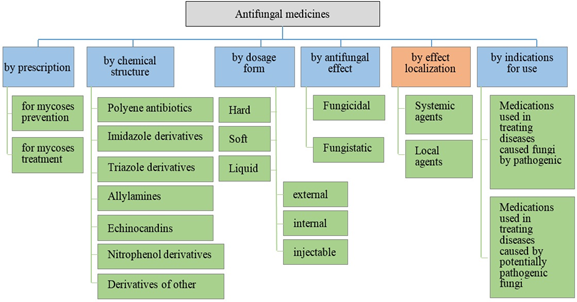
Figure 1. Classification of antifungal medicines
The modern pharmaceutical market is characterized by steady growth in the assortment of products, including antifungal medicines. This is mainly due to the registration of a large number of generic medicines that contain the same active ingredients, but with different commercial names. During the study, we found that today, there are 1432 antifungal medicines
on the Russian pharmaceutical market. According to the EphMRA Anatomical Classification, 523 antifungals, or 37%, belong to the J2A group (Systemic agents for fungal infections); 340 antifungal medicines (24%) make up the D1A group (antifungals, dermatological), followed by groups of antifungal medicines for topical use in specific nosologies (Figure 2).
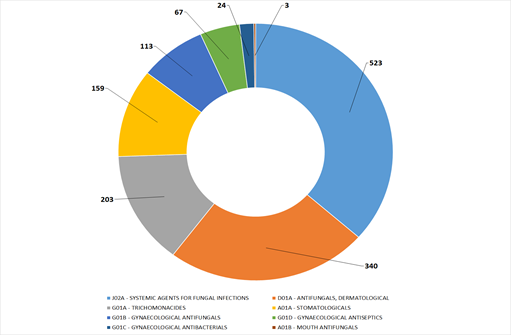
Figure 2. Antifungal medicines grouped by EphMRA classification (based on INNs number of antifungal medicines)
In the study of consumer demand for antifungal medicines, according to the EphMRA classification, we used sales data from Russian pharmacies with various forms of ownership from 2017 through 2019. Figure 3 shows the highest demand for the study period is demonstrated for systemic agents for fungal infections, and the lowest demand for antifungal medicines to treat the oral cavity.
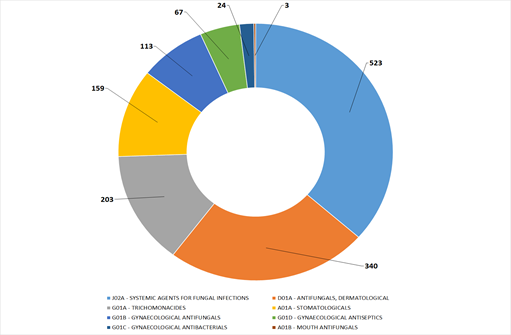
Figure 3. Dynamics of sales of packages of medicines grouped by nosological groups in EphMRA, for 2017-2019 (in 4 quarters, where q1, q2, q3, q4 are 4th, 3rd, 2nd, and 1st quarter, respectively)
After analyzing the assortment of antifungal medicines by INN, it was found that fluconazole is the most common agent present in 22% of antifungal medicines, 16% of the medicines contain Terbinafine, 11% contain Metronidazole and Clotrimazole (respectively) (Figure 4).
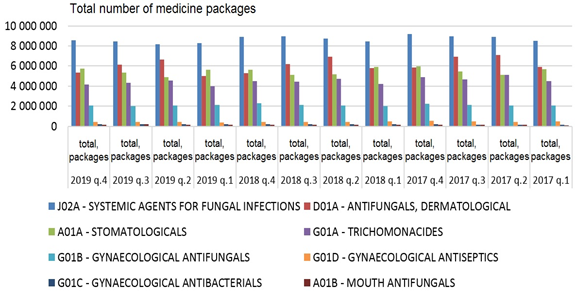
Figure 4: INN of most common agents in the Russian antifungal medicines market
Antifungal medicines are available in various dosage forms. Among internal dosage forms, most are coated tablets (27%) and capsules (20%). Among the external dosage forms, a large share
is accounted by creams for external use (12%), vaginal suppositories (10%), gels (5%), ointments for external use (4%) (Figure 5).

Figure 5: Dosage forms of antifungal medicines
In the structure of an assortment of antifungal medicines, according to the characteristics of the product, Russian medicines dominate, accounting for 58% of the market.
The analysis of the assortment in the context of producer countries showed that in total, 31 producer countries were registered on the Russian market. Among them, in terms of the number of medicines, Russia took the leading position (765 antifungal medicines), followed by India (141 medicines, or 11%), and countries with less than 10 antifungal medicines in the assortment portfolio (Vietnam, Bosnia and Herzegovina, Belgium, Bulgaria, Italy, Canada, Croatia, Switzerland, Republic of Moldova, Romania, Cyprus, and Latvia) each had a share of 3% (Figure 6).
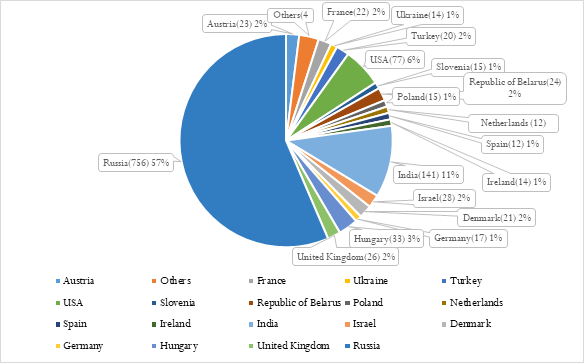
Figure 6: Manufacturers of antifungal medicines (assortment portfolio for 2019, based on the number of medicines registered in the market and % of the total)
The Russian pharmaceutical market consists of two main segments: commercial and state. The commercial segment includes the sale of pharmacy medicines, excluding sales under the Supplemental Drug Support Program (SDSP). The state segment includes the pharmaceutical sales of medicines under the SDSP Program, as well as sales through the Institutes of medical and prophylactic (MPI). After analyzing the distribution of antifungal medicines in various segments of the pharmaceutical market in the Russian Federation, it was found that 46% belonged to the commercial segment, and 54% to the state segment, of which 41% of antifungal medicines were sold through health care facilities, and 13% through pharmacy sales under the SDSP program (Figure 7).

Figure 7: Distribution of antifungal medicines in various segments of the pharmaceutical market of the Russian Federation in 2019 (in percentage)
Based on the analysis of sales conditions from pharmacies, it was found that 717 medicines for the treatment of fungal infections were sold without prescriptions (~ 50%), and the remaining 715 medicines (~ 50%) by prescription (Figure 8).
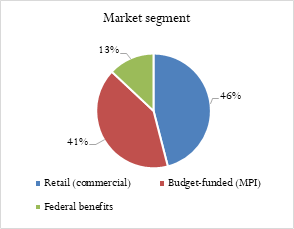
Figure 8: Number of prescription (PRESC) and non-prescription (NPRESC) antifungal medicines sold in 2019
For many years, much attention has been paid to issues related to improving the quality and access medical care to the Russian population, and it concerns the socially disadvantaged categories of the population. The main priority in the work of pharmacies should be social orientation, taking care of the availability of medicamental treatment for all segments of the population. One of the main areas of work in this area is associated with the formation of the list of vital and essential medicines (VED) [23] .As a result of our study, it was found that 34% of antifungal medicines were included in the VED list, and, therefore, 66% of the medicines in this group were not included in the list (Figure 9).
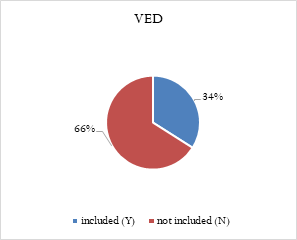
Figure 9: Availability of antifungal medicines in VED lists in 2019 (in percentage)
As a result of the Russian market analysis of antifungal medicines, it was found that systemic and local agents were used for mycoses pharmacotherapy, while the market is dominated by systemic antifungal agents (37%). In the structure of an assortment of medicines for the treatment of mycoses, the first place belongs to the groups of "Triazole derivatives" and "Imidazole derivatives" of medicines. The main market share is occupied by fluconazole preparations ("Triazole derivatives") amounting to 22% and terbinafine ("Imidazole derivatives") equaling 16% of the market. The main forms of release are coated tablets, capsules, creams, and ointments for external use.
The assortment of this group is dominated by Russian medicines (57%). Among foreign countries, India is the leader in the number of medicines on the market (11%). A structural shift in the market in favor of Russian medicines raises hopes that antifungal agents will become more affordable. After analyzing the distribution of antifungal medicines in various segments of the pharmaceutical market in the Russian Federation, we found that 46% were sold in the commercial segment, and 54% were distributed in the state segment. It is known that 50% of antifungal medicines are allowed to be dispensed without a doctor's prescription, which means that not only the demand and level of provision of information and consulting services but also the quality of pharmaceutical care depends on the awareness of consumers and pharmaceutical workers.
Conclusion
Fungal diseases are widespread pathology worldwide. In addition, it is potentially dangerous because, firstly, some fungal infections are easily transmitted and, secondly, the fungal infection tends to spread rapidly in the human body, when its condition is characterized as immunodeficient. Currently, dermatologists have at their disposal a variety of modern antimycotic agents, which greatly facilitates the treatment of this ailment. In terms of marketing, antifungal agents are a very promising pharmacotherapeutic group. The market for antimycotics is constantly under the scrutiny of both doctors and large pharmaceutical corporations. Over the past decade, several new generations of systemic and local medicines have been developed and marketed.
Therefore, studies on the analysis of this assortment allow us to identify trends in the consumer market and market leaders, which allows us to optimize the pharmacy assortment to improve the competitiveness of the pharmacy and increase the profitability of sales.
References
- Belousova OV, Belousov EA, Petrenko SY. Marketing research of the assortment of medicines used to treat fungal diseases. Young scientist. 2016; 16(120): 424-427.
- Morozova, EV. Development of the composition and technology of a spray based on an antifungal phytocomposition: author's abstract of the thesis for the degree of candidate of pharmaceutical sciences: 15.00.01. Kursk State Medical University, Kursk; 2009, 21 p.
- Ghannoum M, Isham N, Catalano V. A second look at efficacy criteria for onychomycosis: clinical and mycological cure. British Journal of Dermatology. 2014 Jan;170(1):182-7.
- Preobrazhenskaya MN, Olsufyeva EN, Tevyashova AN, Printsevskaya SS, Solovieva SE, Reznikova MI, Trenin AS, Galatenko OA, Treshalin ID, Pereverzeva ER, Mirchink EP. Synthesis and study of the antifungal activity of new mono-and disubstituted derivatives of a genetically engineered polyene antibiotic 28, 29-didehydronystatin A 1 (S44HP). The Journal of antibiotics. 2010 Feb;63(2):55-6
- WHO traditional medicine strategy 2002-200 World health report, World Health Organization, Geneva; 2002, 74 p.
- Mohseny M, Shekarriz-Foumani R, Mohseni M, Ghadirian L, Jafari H, Goudarzian M, and et al. Structures and Practices in Clinical Preventive Services. Int. J. Pharm. Phytopharm. Res. 2019;9(6):66-70.
- Atia A. Physician trends of drug prescription in Libya: A pharmacoepidemiological study. Dermatology. 2019 Jul 1;22:3-4.
- Derbisbekova UB, Datkhaev UM, Zhuravel IA, Tkachenko EV. Marketing research of antifungal medicines in the Republic of Kazakhstan. Bulletin of KazNMU. 2016; 4: 349-353.
- Ramazanova BA, Batyrbaeva DZh, Beknazarova AN. Different types of fungal infections in cancer patients. Bulletin KazNMU. 2015; 3: 47 -55.
- Uvarova Y. The market for antifungal medicines for the treatment of skin diseases. Remedium. 2011; 10: 39–41.
- Faizullina EV. On the prevalence and risk factors of certain fungal diseases. Healthcare of the Russian Federation. 2012; 5: 16–18.
- Fedorov SM. Current issues of modern dermatoprofpathology. Dermatology and Venereology news. 2012; 4: 20–21.
- Nasrulaeva KhN, Alkhazova RT, Magomedova PM, Magomedova RG. Analysis of the use of antifungal medicines during course treatment and determination of the cost estimate of the treatment of patients with fungal lesions of the skin and nails. International research journal. 2016; 5(47(5): 185-188. DOI: 10.18454/IRJ.2016.47.126
- Gerasimova OV, Belousova OV, Belousov EA. Marketing analysis of the assortment of medicines for the treatment of atopic dermatitis. Research Result. Medicine and Pharmacy. 2016; 2(3): 41-48 (in Russian). DOI: 10.18413/2313-8955-2016-2-3-41-48.
- Gilchrist M, Wade P, Ashiru-Oredope D, Howard P, Sneddon J, Whitney L, Wickens H. Antimicrobial stewardship from policy to practice: experiences from UK antimicrobial pharmacists. Infectious diseases and therapy. 2015 Sep 1;4(1):51-64.
- Micallef C, Aliyu SH, Santos R, Brown NM, Rosembert D, Enoch DA. Introduction of an antifungal stewardship programme targeting high-cost antifungals at a tertiary hospital in Cambridge, England. Journal of Antimicrobial Chemotherapy. 2015 Jun 1;70(6):1908-11.
- Muñoz P, Valerio M, Vena A, Bouza E. Antifungal stewardship in daily practice and health economic implications. Mycoses. 2015 Jun;58:14-25.
- Popovich L. Pharmaceutical market perspectives in Russia. International Journal of Healthcare Management. 2013; 6(1): 63–65.
- Stros M, Lee N. Marketing dimensions in the prescription pharmaceutical industry: a systematic literature review. Journal of Strategic Marketing. 2015 Jun 7;23(4):318-36.
- Alzahrani MI, Alzahrani MI, Alsolami EA, Al Sulami AH, Abdulrahman A, Alhejaili MA, Alahmdi YM, Alharbi FS, Assery AA, Ahmed Z. Evaluative Role of Family Physician in Diagnosis and Management of Gout in Primary Health Care Centers: A Simple Literature Review. Archives of Pharmacy Practice. 2019 Jul 1;1:126.
- AL-Shakhshir SM, Sulaiman SA, Alhaddad MS, Ismail MP. Assessment of the Effectiveness of a Pharmacist-Led Digital Educational Program on Knowledge, Perception, and Practice of Pregnant Women at a Tertiary Care Teaching Hospital. Archives of Pharmacy Practice. 2019 Jan 1;10(1).
- Vasil'eva NV, Klimko NN, Tsinzerling VA. Diagnosis and treatment of invasive mycoses: current recommendations. Vestnik Sankt-Peterburgskoy meditsinskoy akademii poslediplomnogo obrazovaniya. 2010;4:5-18.
- Kvachakhiya LL. Vital and essential medicines. Karelian scientific journal 2018; 7(1(22)): 125-128.
Contact SPER Publications
SPER Publications and
Solutions Pvt. Ltd.
HD - 236,
Near The Shri Ram Millenium School,
Sector 135,
Noida-Greater Noida Expressway,
Noida-201301 [Delhi-NCR] India
